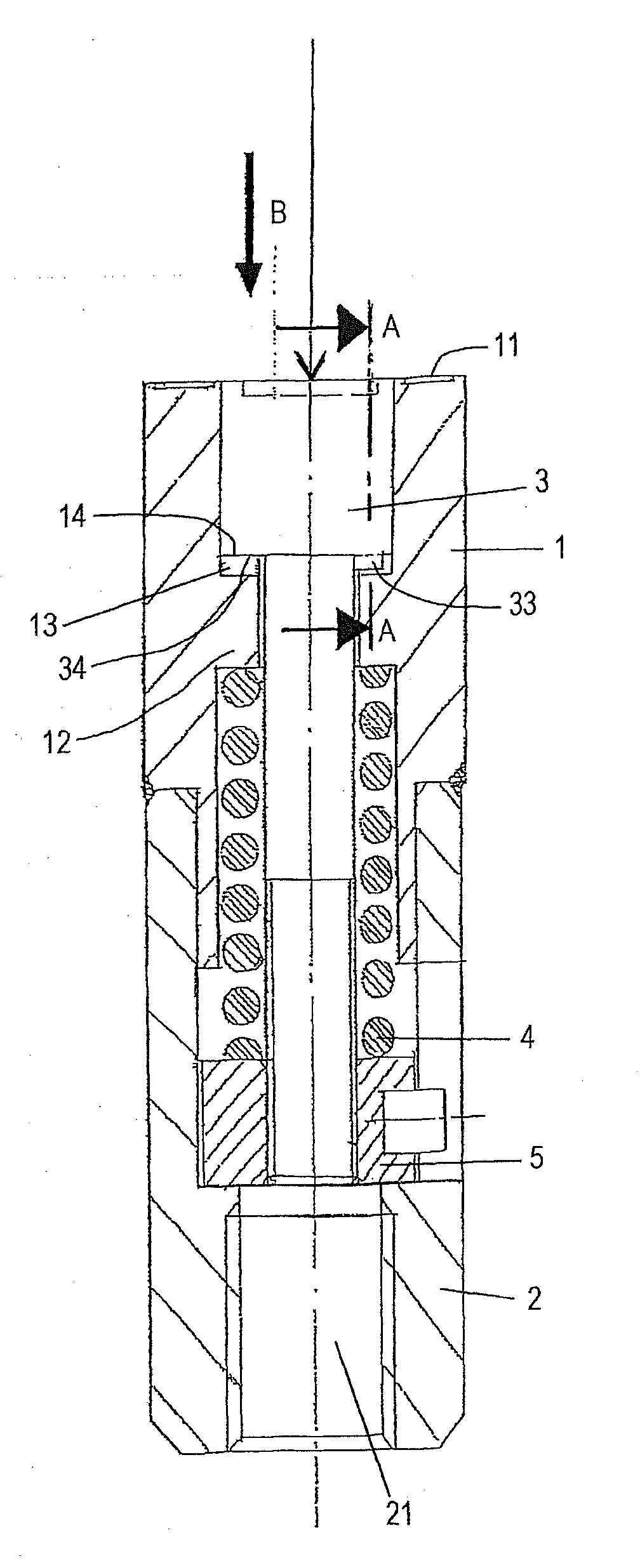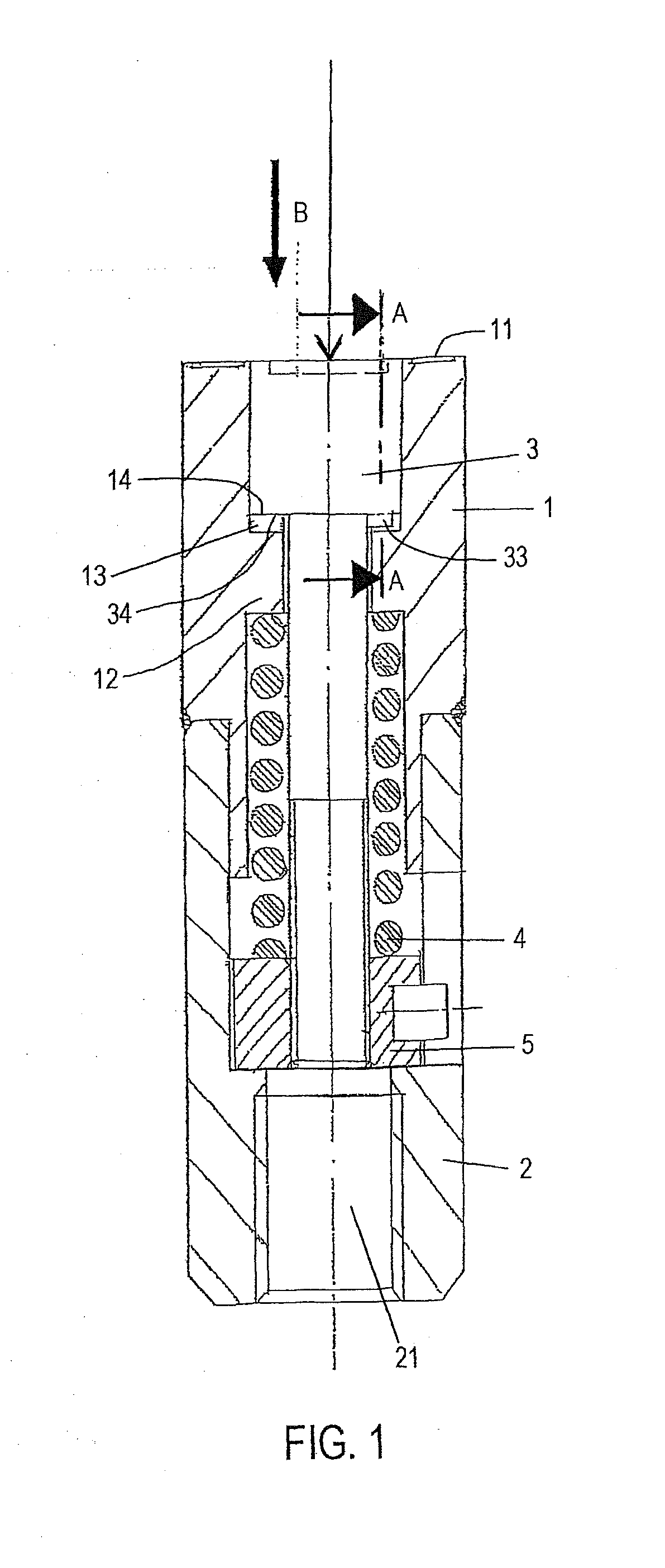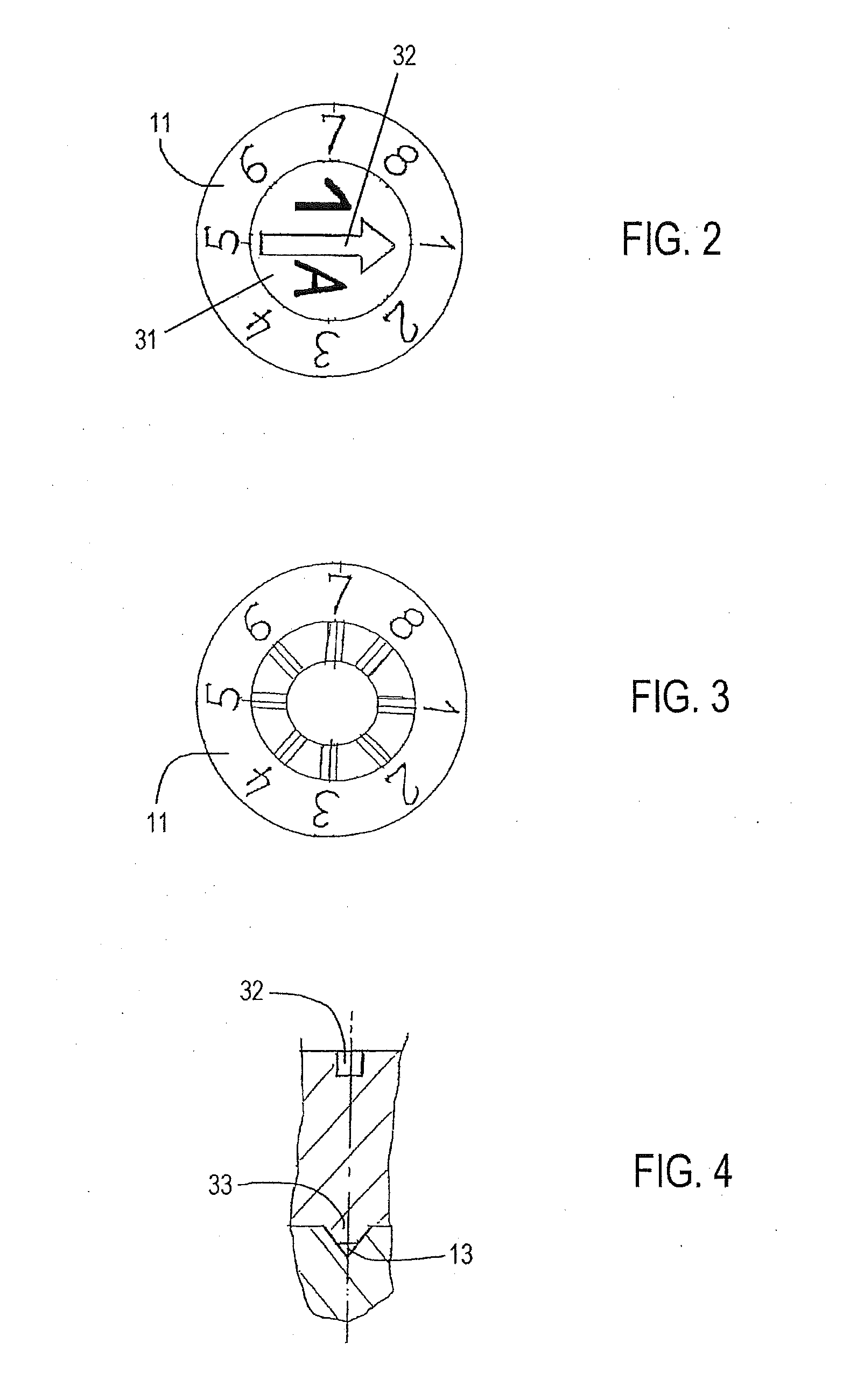Variable identification stamp
- Summary
- Abstract
- Description
- Claims
- Application Information
AI Technical Summary
Benefits of technology
Problems solved by technology
Method used
Image
Examples
Embodiment Construction
[0027]In the following, the embodiments of the present invention are described.
[0028]FIG. 1 shows a view in the longitudinal section of an identification stamp according to the invention.
[0029]In the description of the present invention, the upper side of the identification stamp is defined as the side comprising the marking which is to be applied onto the workpiece to be marked. The lower side of the identification stamp is defined as the side that faces away from the marking side and is used for mounting on an embossing tool. Therefore, in FIG. 1, the marking side is at the top.
[0030]The identification stamp according to the invention is composed of an upper part 1 of the housing body (hereinafter: housing body upper part 1) and a lower part 2 of the housing body (hereinafter: housing body lower part 2). The upper side (upper surface) of the housing body upper part 1 forms the embossing side (marking side). The housing body upper part is formed as a cylinder and is provided with a...
PUM
| Property | Measurement | Unit |
|---|---|---|
| Circumference | aaaaa | aaaaa |
Abstract
Description
Claims
Application Information
 Login to View More
Login to View More - R&D
- Intellectual Property
- Life Sciences
- Materials
- Tech Scout
- Unparalleled Data Quality
- Higher Quality Content
- 60% Fewer Hallucinations
Browse by: Latest US Patents, China's latest patents, Technical Efficacy Thesaurus, Application Domain, Technology Topic, Popular Technical Reports.
© 2025 PatSnap. All rights reserved.Legal|Privacy policy|Modern Slavery Act Transparency Statement|Sitemap|About US| Contact US: help@patsnap.com



